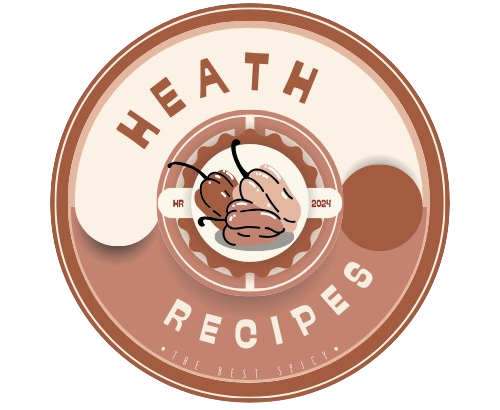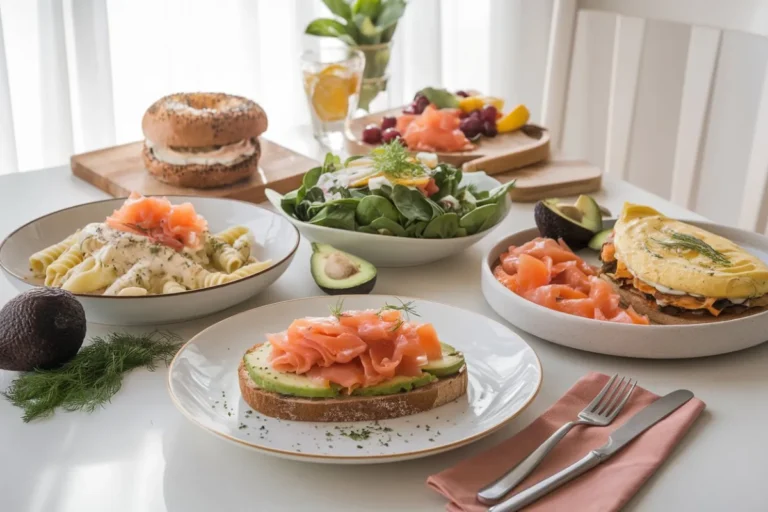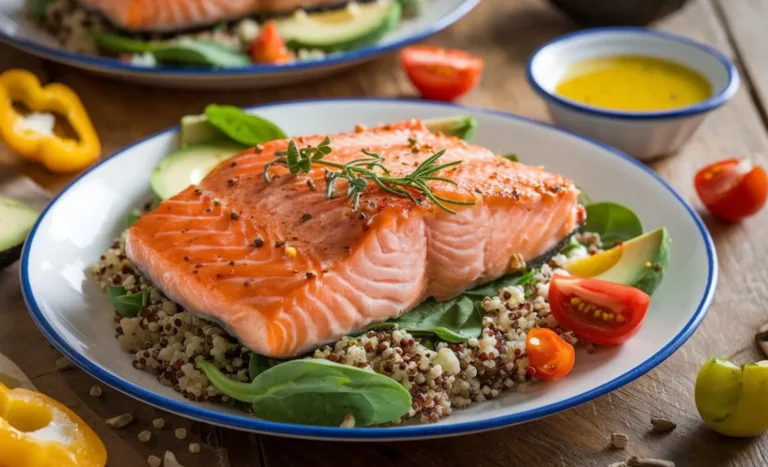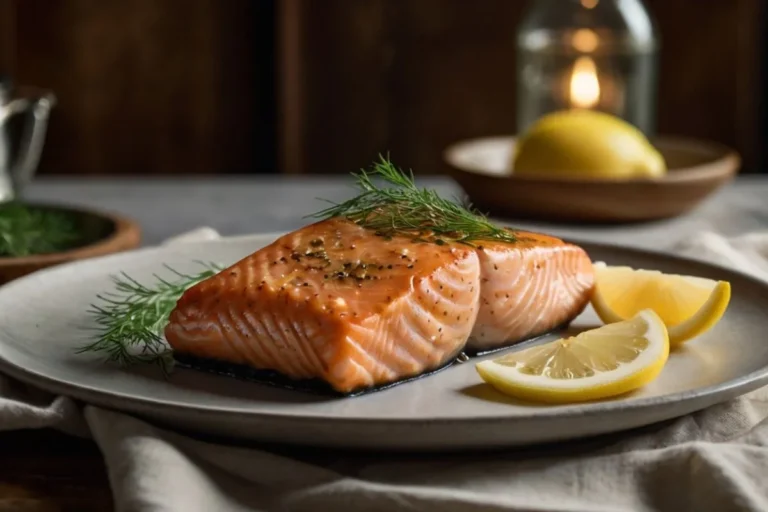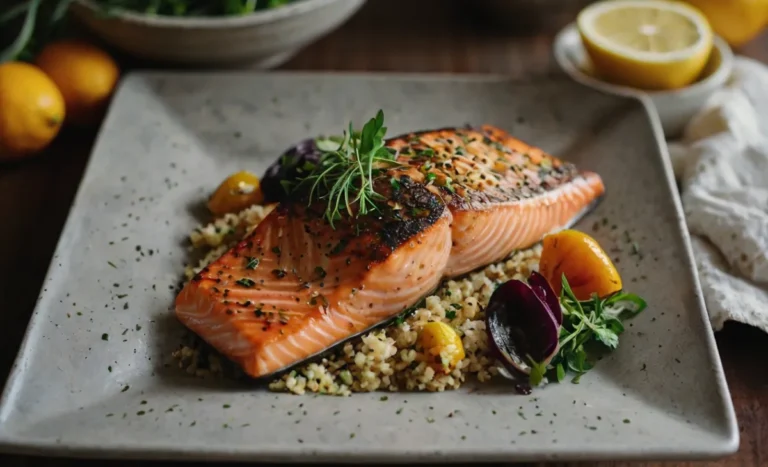How to Nail the Perfect Baked Salmon Temperature Every Time
Cooking salmon to perfection doesn’t have to be intimidating. Whether you’re a seasoned home chef or just getting started in the kitchen, understanding the right baked salmon temperature is crucial for delivering a moist, flavorful dish. Overcooked salmon can taste dry and rubbery, while undercooked salmon poses food safety risks. With the right tools and tips, you can ensure perfectly baked salmon every time, impressing your family and guests with your culinary skills.
Why the Right Baked Salmon Temperature Matters
The temperature you bake salmon at significantly affects the texture, flavor, and overall quality of the fish. Cooking salmon at an appropriate temperature ensures it retains its natural juices, providing a tender and flaky texture. Additionally, following temperature guidelines guarantees that your fish is safe to eat. The FDA recommends an internal temperature of 145°F (63°C) for salmon to be considered fully cooked. This internal temperature kills harmful bacteria without compromising the flavor or moisture of the fish.

Tools You’ll Need to Monitor Temperature
Achieving the perfect baked salmon requires the right tools. A digital meat thermometer is your best friend in the kitchen. It provides precise readings, allowing you to avoid guesswork. An oven thermometer is also essential to verify your oven’s accuracy. Sometimes, ovens can run hotter or cooler than the displayed temperature. Pair these with a quality baking sheet or an oven-safe dish to promote even cooking. These tools ensure consistency and reliability, so you’ll never have to second-guess your results.
Preparing Salmon for Perfect Baking
Selecting Fresh and High-Quality Salmon
The journey to flawless baked salmon starts with selecting the best fish. Look for salmon with bright, vibrant flesh and a clean, oceanic smell. Avoid any fish with a dull or grayish appearance or a strong, unpleasant odor. If you’re debating between wild-caught and farm-raised salmon, know that wild-caught typically offers a more robust flavor and leaner texture, while farm-raised salmon is milder and fattier.
Properly Seasoning Salmon
Once you’ve chosen your salmon, it’s time to prepare it for baking. A basic seasoning of salt, pepper, and olive oil can enhance the natural flavors. For added zest, consider marinades with ingredients like lemon juice, garlic, honey, or fresh herbs. Marinating salmon for 15-30 minutes can deepen the flavor without overpowering the fish’s delicate taste. Always pat your salmon dry before seasoning to ensure the surface crisps up nicely in the oven.

Step-by-Step: Baking Salmon to Perfection
Setting the Oven Temperature
The oven temperature plays a vital role in determining the final texture of your salmon. For tender, juicy salmon, bake at 350°F (175°C). If you prefer crispy edges, opt for a higher temperature of 400°F (205°C). Preheating the oven is non-negotiable. A preheated oven ensures even cooking, preventing the edges from drying out before the center is done.
How Long to Bake Salmon
Cooking times vary depending on the thickness of the fish. For a 1-inch thick fillet, bake for 12-15 minutes at 375°F. Thicker fillets, around 1.5 inches, may require 18-20 minutes. Always check for doneness a few minutes before the suggested time, as every oven performs differently. Use your meat thermometer to measure the internal temperature at the thickest part of the fish. When it reaches 145°F, your salmon is ready.
Checking Doneness
While a thermometer provides the most reliable confirmation, visual cues can also help. Perfectly cooked salmon will have an opaque color and flake easily with a fork. The flesh should feel firm yet tender. If the salmon looks translucent or feels mushy, it needs more time in the oven.
Common Mistakes to Avoid When Baking Salmon
Even experienced cooks can make mistakes when baking salmon. Here are some pitfalls to avoid:
- Baking at an incorrect temperature: Too high can dry out the fish, while too low might leave it undercooked.
- Skipping the thermometer: Guessing doneness increases the risk of overcooking or undercooking.
- Forgetting to preheat the oven: Preheating ensures even cooking from start to finish.
- Overcrowding the baking sheet: Allowing space around the fillets promotes even heat distribution.

Enhancing Flavor: Side Dishes and Pairings
A beautifully baked salmon deserves equally impressive side dishes. Roasted vegetables, such as asparagus or Brussels sprouts, complement the fish’s rich flavor. Quinoa, wild rice, or mashed potatoes provide a hearty base. For a fresh touch, serve with a citrusy salad featuring arugula, oranges, and a light vinaigrette. When it comes to beverages, a glass of Chardonnay or Pinot Noir pairs beautifully with salmon, enhancing its natural flavors.
Recipe: Classic Baked Salmon
Ingredients Table
| Ingredient | Quantity |
|---|---|
| Fresh salmon fillet | 2 pounds |
| Olive oil | 2 tablespoons |
| Lemon juice | 1 tablespoon |
| Garlic powder | 1 teaspoon |
| Salt and pepper | To taste |
Step-by-Step Instructions
- Preheat your oven to 375°F (190°C).
- Line a baking sheet with parchment paper for easy cleanup.
- Place the salmon fillet on the sheet, skin-side down.
- Drizzle olive oil and lemon juice over the fillet.
- Season with garlic powder, salt, and pepper.
- Bake for 12-15 minutes, checking the internal temperature with a thermometer.
- Once the salmon reaches 145°F, remove it from the oven and let it rest for 5 minutes before serving.
Nutrition Information
Table of Nutrition Per Serving
| Nutrient | Amount (per 4 oz) |
| Calories | 240 |
| Protein | 23g |
| Fat | 13g |
| Omega-3 | 1,200mg |
Conclusion
Mastering the art of baking salmon starts with understanding the ideal temperature and cooking techniques. With the right tools, proper preparation, and attention to detail, you can consistently achieve tender, flavorful results. Experiment with different seasonings and sides to keep things exciting, and don’t forget to share your creations with friends and family. Perfectly baked salmon is more than just a meal—it’s a memorable experience.
FAQ Section
What is the best temperature to bake salmon?
The best temperature ranges between 350°F and 400°F. For tender results, stick to 350°F. For crispy edges, go for 400°F.
How do I know when salmon is fully cooked?
Use a digital thermometer to check the thickest part of the salmon. It should read 145°F. Additionally, look for an opaque color and flaky texture.
Can I bake frozen salmon?
Yes, but increase the cooking time by 10-15 minutes. Check the internal temperature to ensure it reaches 145°F.
How can I keep salmon from drying out?
Brush the salmon with olive oil or butter before baking. Covering it loosely with foil during the first half of cooking can also help retain moisture.
Do I need to preheat the oven?
Yes! Preheating ensures even cooking and prevents the edges from drying out before the center is done.
Follow these tips, and you’ll be well on your way to nailing the perfect baked salmon temperature every time. Enjoy!
